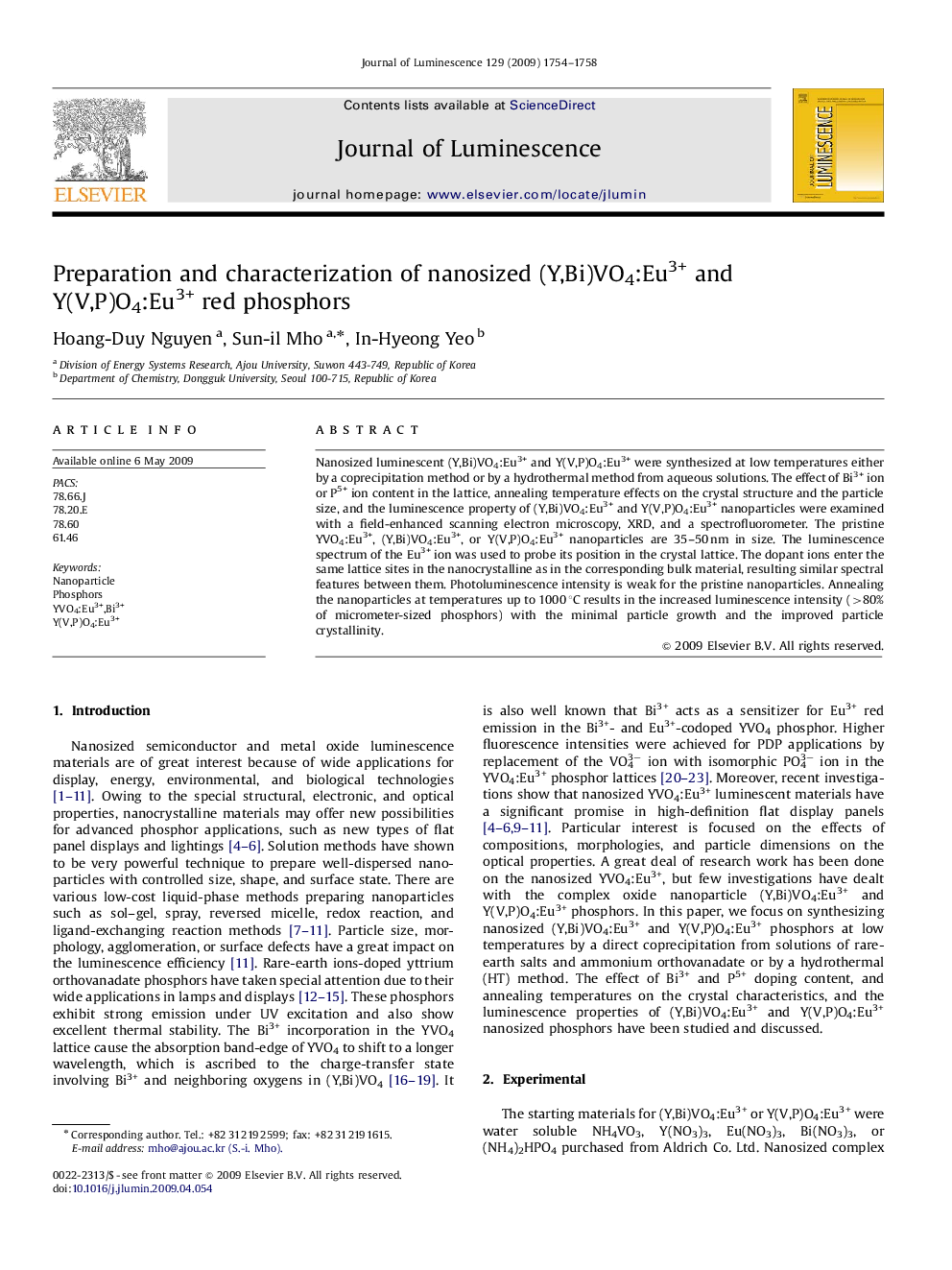| Article ID | Journal | Published Year | Pages | File Type |
|---|---|---|---|---|
| 5402708 | Journal of Luminescence | 2009 | 5 Pages |
Abstract
Nanosized luminescent (Y,Bi)VO4:Eu3+ and Y(V,P)O4:Eu3+ were synthesized at low temperatures either by a coprecipitation method or by a hydrothermal method from aqueous solutions. The effect of Bi3+ ion or P5+ ion content in the lattice, annealing temperature effects on the crystal structure and the particle size, and the luminescence property of (Y,Bi)VO4:Eu3+ and Y(V,P)O4:Eu3+ nanoparticles were examined with a field-enhanced scanning electron microscopy, XRD, and a spectrofluorometer. The pristine YVO4:Eu3+, (Y,Bi)VO4:Eu3+, or Y(V,P)O4:Eu3+ nanoparticles are 35-50 nm in size. The luminescence spectrum of the Eu3+ ion was used to probe its position in the crystal lattice. The dopant ions enter the same lattice sites in the nanocrystalline as in the corresponding bulk material, resulting similar spectral features between them. Photoluminescence intensity is weak for the pristine nanoparticles. Annealing the nanoparticles at temperatures up to 1000 °C results in the increased luminescence intensity (>80% of micrometer-sized phosphors) with the minimal particle growth and the improved particle crystallinity.
Related Topics
Physical Sciences and Engineering
Chemistry
Physical and Theoretical Chemistry
Authors
Hoang-Duy Nguyen, Sun-il Mho, In-Hyeong Yeo,
